![]()
![]()
![]()
Use LEFT and RIGHT arrow keys to navigate between flashcards;
Use UP and DOWN arrow keys to flip the card;
H to show hint;
A reads text to speech;
18 Cards in this Set
- Front
- Back
- 3rd side (hint)
|
Disclosure privacy dialectic |
Tension between sharing personal information and keeping personal information confidential. |
|
|
|
Disclosure |
Revealing confidential or secret information. |
|
|
|
Privacy |
The opposite of disclosure, withholding confidential or secret information to enhance autonomy and or minimize vulnerability. |
|
|
|
Communication privacy management theory . |
a theory that provides a framework for understanding the decision-making processes people use to manage disclosure and privacy. |
|
|
|
Risk benefit analysis |
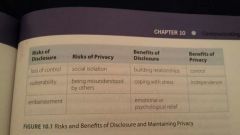
Wayne what advantages we might gain by disclosing private information or maintaining private information against the dangers. |
|
|
|
Reciprocity |
The mutual disclosure of similarly sensitive information by both partners. |
|
|
|
Information co-ownership |
The private information that each partner has shared with the other so that it is now jointly held. |
|
|
|
Owning also known as crediting yourself |
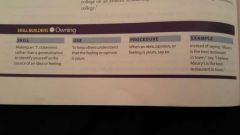
This is closer still with you this quote on quote a statement to credit yourself for your own ideas and feelings. |
|
|
|
Describing behavior |
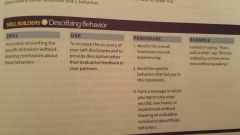
The disclosures still owe accurately recounting the specific behaviors of others without drawing conclusions about those behaviors. |
|
|
|
Describing feelings |
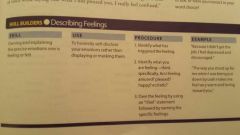
The disclosure skill of owning and explaining the precise emotions you are experiencing. |
|
|
|
White lie |
A false or misleading statement to avoid telling the truth that would embarrass or hurt an individual or a relationship. |
|
|
|
Personal boundaries |
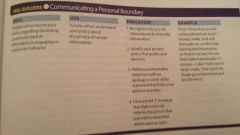
The points that separate the parts of ourselves that we are comfortable sharing with a relationship partner from the parts of ourselves that we maintain as our private inner life. |
|
|
|
Personal Feedback |
Disclosing information about others to them. |
|
|
|
Asking for personal Feedback |
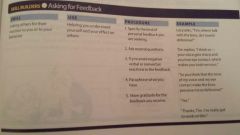
The disclosure skill of gaining self-knowledge by requesting that your partner disclose observations about your behavior. |
|
|
|
Praising |

The disclosure skill of describing the specific behaviors or accomplishments of our partners and their positive effects on others. |

|
|
|
Constructive criticizing |
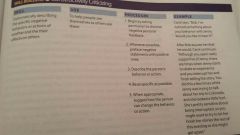
The disclosure skill of diplomatically describing the specific negative behavior of your partner and its effects on others. |
|
|
|
Warranting theory |
Proposes that you will place more credibility on information about the personal characteristics and behaviors of others when the online information cannot be easily manipulated by the person whom it describes. |
|
|
|
Summary |
As an interpersonal communicator, it is important to manage the dialectic tension between disclosure and privacy. Disclosure is revealing confidential or secret information. Privacy is withholding confidential or secret information to enhance autonomy and minimize vulnerability. Communication privacy management or CPM theory provides a framework for understanding the decision-making processes people used to manage disclosure in privacy. CPM asserts that each of us has developed rules about privacy and disclosure to guide our behaviors as we make choices to disclose or conceal personal information about our cells and about others. These rules are designed to maximize the benefits of disclosure while minimizing risks. The rules we used to guide our decisions about disclosure very with our culture, gender, motivation, context, and risk benefit analysis. The three most important ways that disclosure and privacy effect relationships are in terms of intimacy, expectations for reciprocity, and information co-ownership. Skills for self disclosure include owning, describing behavior, and describing feelings. Strategies for privacy management include changing the subject, masking feelings, and telling white lies, in addition to describing feelings and communicating boundaries. Skills for disclosing personal Feedback include asking for feedback comma describing behavior, praising, and constructively criticizing. The rapid development and frequent use of social media has transformed how we practice digital communication and manage your personal information. The attributes of social media and how we use those features have modded the line between what we considered public versus private communication. Warranting theory post-its that online information about the personal characteristics and behaviors of others will see more credible when it cannot be easily manipulated by the person whom it describes. |
|

